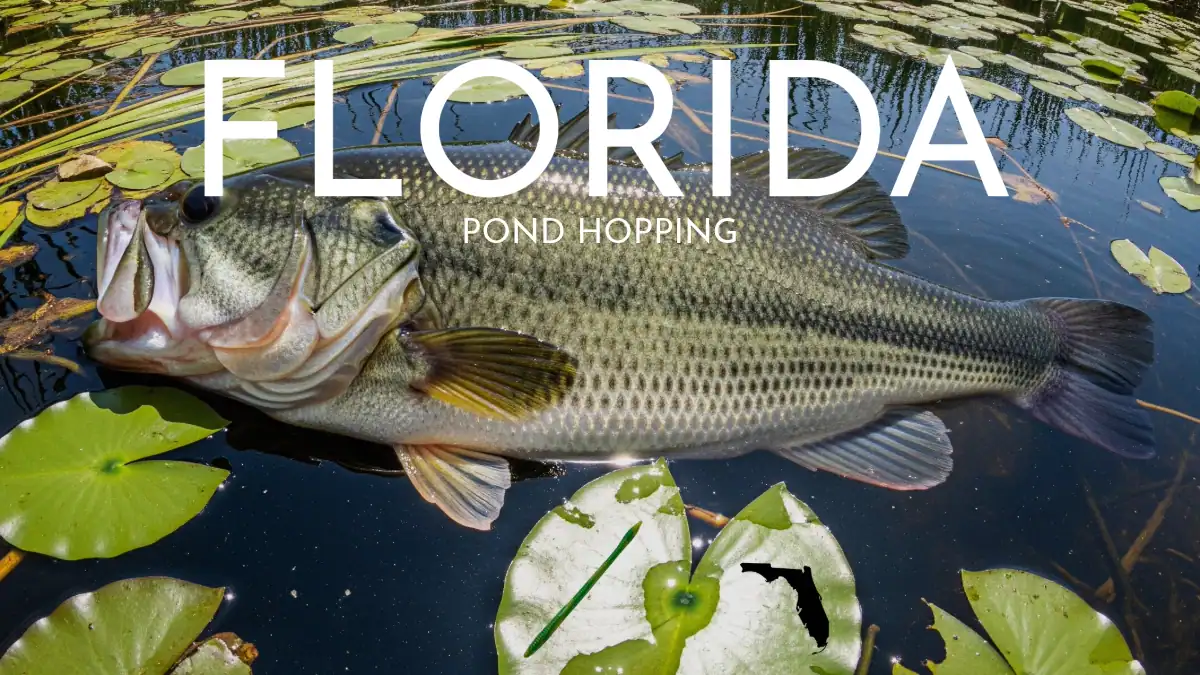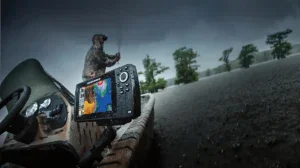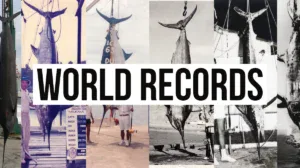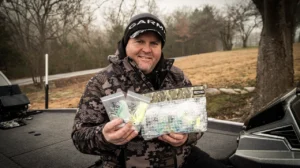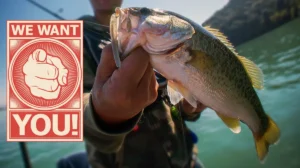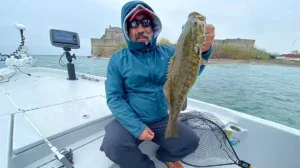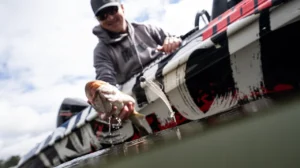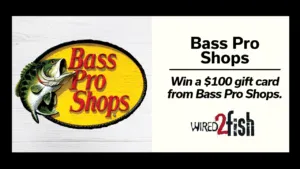Most cities and towns in Florida require a retention pond or two to be dug out and constructed whenever a new neighborhood is built. And there are plenty of new neighborhoods popping up across the state. So with the impervious surfaces that come with development, those manmade ponds are just about everywhere collecting rain water.
Add in the natural lakes, rivers, springs and streams. Throw in all the golf course ponds. Sprinkle in the canal systems that help control flooding during the rainy months. There’s plenty of water to explore by foot in the flattest US state. Water doesn’t rush down inclines like mountains in Florida — it just puddles up until finally soaking into our porous limestone aquifer.
An angler on bike, foot or skateboard can have an absolute field day exploring their local waters for largemouth bass (sorry, no smallmouths in Florida). Still, I wouldn’t plan to keep any fish unless you happen upon an untouched, pristine water body. Although Florida produces mega-size bass, the state has an over abundance of polluted freshwaters and estuaries.
Pond Hopping
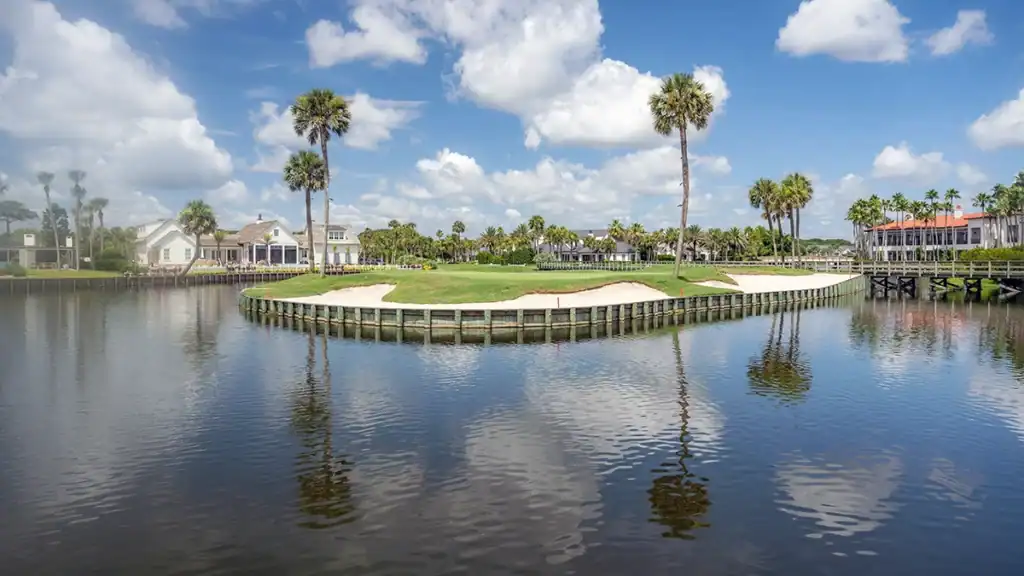
But you didn’t come here to learn about Florida’s water sagas. Instead, we want to take advantage of the multitude of ponds that are as common as mosquitoes.
Land at Orlando International Airport and you’ll have to take a tram that crosses a pond that’s filled with bass and gators. Southeast Florida’s lakes and canals teem with bass, but also a host of exotics you might recognize from aquariums. In Southwest Florida, bass mingle with tarpon and snook in freshwater ponds that often connect to the coastline’s estuaries. St. Augustine, the Palm Beaches, and Naples are all golfing destinations. And many of the largest golf course ponds — especially if they have aerators or fountains in them — are big bass factories.
Like I said, no matter where you visit, there’s probably a pond within a stone’s throw that has fish swimming in it. Getting access can be an issue, but if you find yourself along a shoreline in the evening glow, the rewards might be picture worthy.
Don’t overlook Florida’s public spaces. Many municipalities have walking trails that surround ponds, or at least buffer them for a portion of the time. Riverwalks often have ponds nearby that serve as flood plains. City centers themselves are sometimes designed around a pond. And all those playgrounds you take your kids, cousins or grandkids to likely have a pond or lake as a water feature.
Swim a Worm
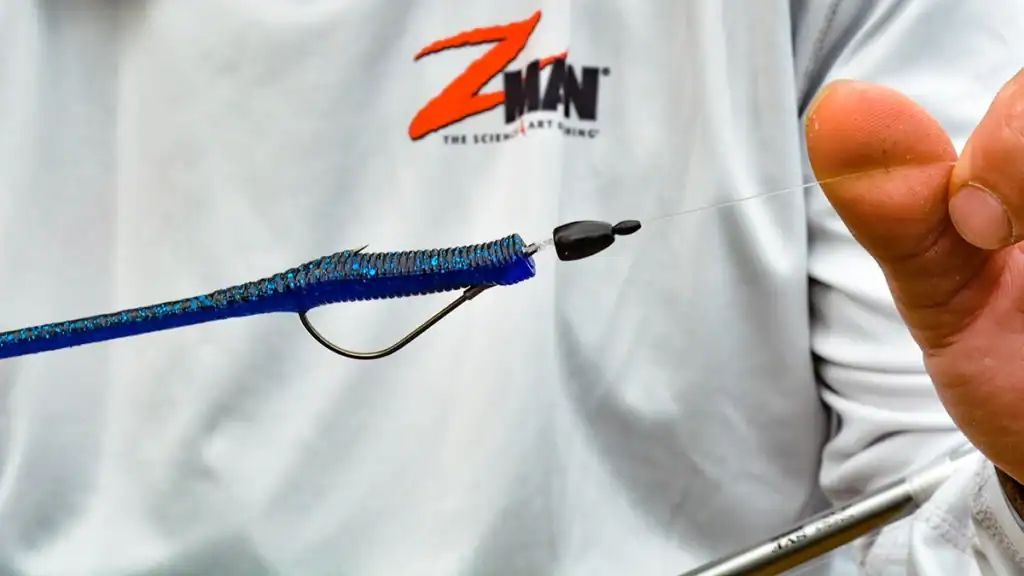
As a lifelong Floridian, I learned pretty early on what my go-to lure is when targeting bass from the bank. And that hasn’t changed over the years, although the variety sure has! Simply put, it’s a weightless or very lightly weighted soft plastic worm that swims in the water just as much as it bounces. The ponds in Florida are not deep, usually just a couple of feet anywhere near the shore. Plus, the weeds and other vegetation that grow in Florida’s warmth are relentless. Another common feature of Florida ponds is to have scattered weed encircling the entire pond but have very little structure of any kind in the middle of it.
That means crankbaits, lipless cranks, and glide baits get hung up easily in the salad. Shallow depths coupled with pads, weeds, reeds or submerged grass necessitate a weedless presentation. Keep in mind walking a shoreline handicaps you when compared to fishing from a bass boat or kayak. Electronics and maneuverability help find deep waters and structure where bass really want to be in the hot months and that lone cold month of January. Shore fishermen can make up the disadvantage by covering a host of different ponds — make it a numbers game.
Personally, I’m looking for a soft bait with buoyancy to stay near the surface when rigged weightless, something that sinks very slowly, but definitely something I can swim. Why swimming? It’s the best option to present a bait through the prevalent shorelines weeds without fouling your bait. The Zoom Trick Worm that measures 6 to 7 inches is a favorite. Berkley’s PowerBait MaxScent The General, and other stick baits such as the Z-Man TRD, can get bit with its do-nothing fall when center hooked. Of course, the Senko bite might be the most famous bait in this category. Floating baits like those from Z-Man also work well. Adding a light weight from 1/16 to 1/32 ounces can definitely help the action of the bait without sending it to the bottom like an anchor.
But when push comes to shove, my favorite bait to throw is a heavy soft plastic that doesn’t need any weight added, but still floats or sinks slowly. Here’s the kicker, I want a worm with a tail that kicks — something with a boot tail or similar. Baits like the YUM Swim’n Dinger, Strike King Rage Tail Cut-R Worm, Berkley Powerbait Speed Boss Worm or the Z-Man Turbo Fattyz Worm measuring at least 5 inches long are the baits I rely on. Yes, sometimes I’ll add a bit of weight at the nose, or I’ll use a weighted worm hook. The swimming action allows me to impart a lifelike action in the middle and upper water column.
Ponds Can Hold Giants
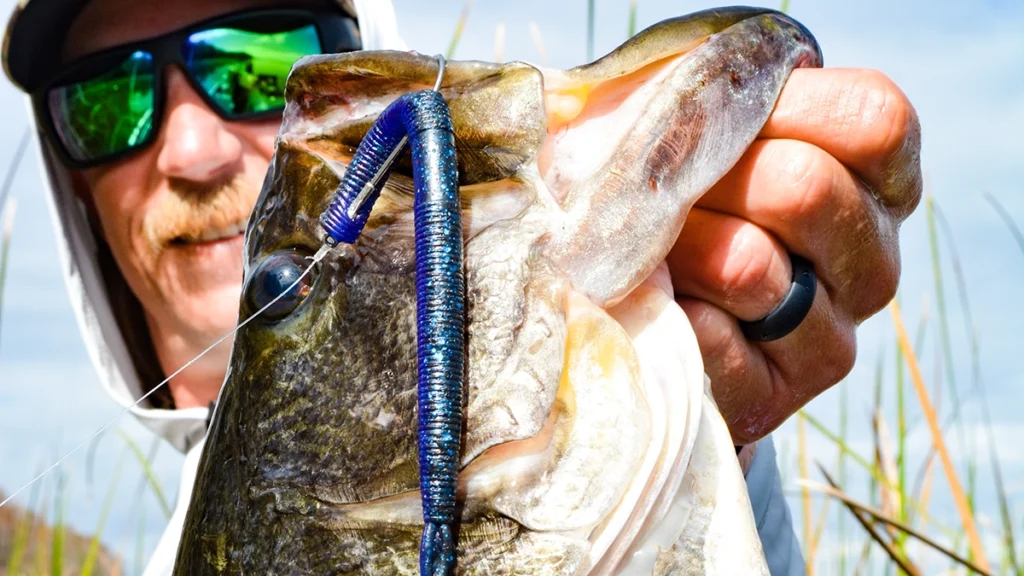
Florida pond shorelines have major similarities. Unless a tree like an old growth cypress has fallen over, there isn’t much in the way of wood structure. Florida’s topography is not one full of boulders. That leaves manmade docks for structure, which are way more common on lakes than ponds. But mostly it means bass will gravitate toward vegetation in ponds.
Fishing a retention pond that sat next to a Publix parking lot, I learned as a kid to skip the parts of the pond that butt up against clean-cut, nuclear-green grass. There’s absolutely no structure for bass to hide, and likely pesticides, fertilizers and herbicides leech into the water there. Instead, find the weeds, find the pads, or find any structure where bass and bluegills can hide in the shade.
The largest bass I ever caught I had to retrieve from a thick weed mat in a church pond. The weed edge along this pond spread far out – about the entire length of a cast I could make as a kid. But that bass struck right as the bait hit the water, made one jump, and went straight into the mat. I couldn’t move it. My dad thought I was just hung up.
Determined to get this fish in, I waded through the muck, following my line as I went. My dad held the bass rod as I finally got to the fish. It was still hooked, and when I grabbed it by the lip and pulled it from the weeds to show my dad, he was gobsmacked. The fish had to have weighed at least 8 pounds, and if I wasn’t so humble I’d bet it was a 10-pounder. Still, it’s the absolute biggest largemouth I’ve ever caught.
Not All Ponds Are Honey Holes
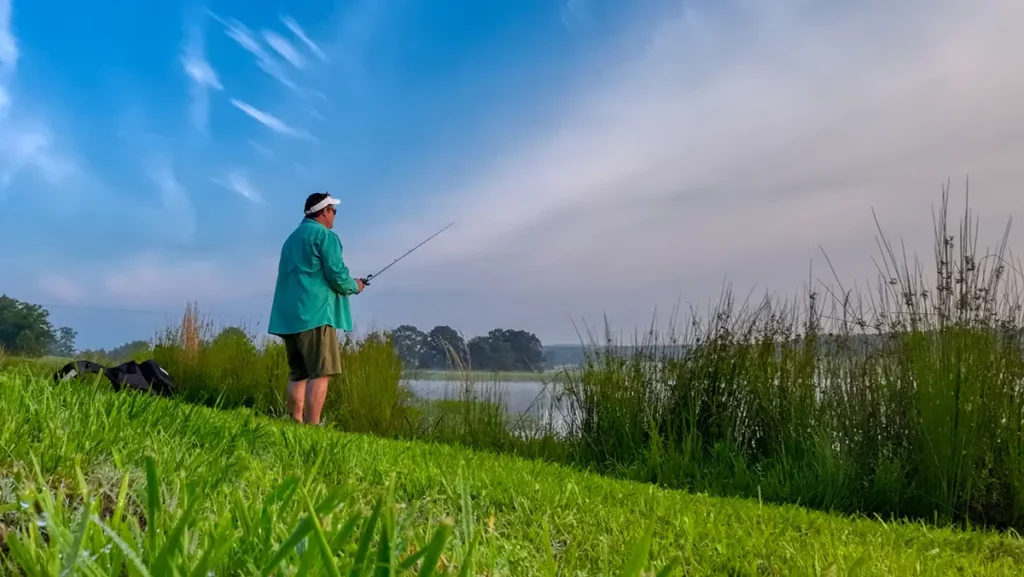
For as many ponds as I’ve fished in Florida, so many times I’ve struck out. Not all ponds have fish, no matter what the internet or Facebook tells you. Absolutely, the best time to target bass is dawn and dusk when water temperatures are moderate.
A Florida pond very easily becomes too hot for bass to feed with aggression. Ponds are often too shallow or choked with weeds. Don’t forget about over-nutrients or runoff from roads, yards, shopping centers or septic. Fountains and aerators do the heavy lifting of keeping ponds oxygenated and slightly cooler during the heat. Definitely look for those when pond hopping.
Fish kills are a common thing in ponds too, partly why some waters will have only tilapia in them — since it’s the only fish able to survive the hot conditions. Fish kills can also happen after heavy rainfall. The primary reason is a significant drop in dissolved oxygen levels. This oxygen depletion is made worse by the rain, which can introduce organic matter that decomposes, leading to oxygen consumption. Additionally, rain can trigger algae blooms or cause the pond’s water to turn over, both of which reduce available oxygen for fish.
Armed with everything you need to know about Florida pond fishing, now’s the time to get to scouting. You know exactly what to look for in a pond. And you know which ponds not to spend much time on if the bass aren’t biting. And most importantly, you know exactly which bait to sling.
